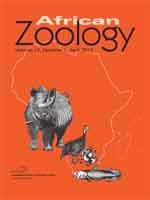The relative population numbers of rodents were studied in nine habitats in and outside the N'washitshumbe enclosure site, Kruger National Park, before and after burning the firebreaks that surround the enclosure. Trap success was exceptionally high, and the field work is suspected to have coincided with a Mastomys population explosion. This genus dominated the small mammal communities before and after the burn, and never disappeared from the burnt patches. Its numbers also did not crash directly after the burn, as have been reported in most other studies. Movement from the burnt areas was observed, which may have had a significant impact on the numbers of rodents caught both inside the enclosure and in the more natural areas outside. Our study suggests that fire can be investigated as a tool to keep rodent densities down in areas where they are nuisance animals, especially when used in conjunction with models that forecast outbreaks of Mastomys. It also emphasizes the value of long-term studies informing management strategies for animal damage control and biodiversity and ecosystem conservation.
How to translate text using browser tools
1 April 2012
The Influence of Fire on Rodent Abundance at the N'washitshumbe Enclosure Site, Kruger National Park, South Africa
D.N. MacFadyen,
N.L. Avenant,
M. van der Merwe,
G.J. Bredenkamp
ACCESS THE FULL ARTICLE

African Zoology
Vol. 47 • No. 1
April 2012
Vol. 47 • No. 1
April 2012
animal damage control
biodiversity
ecosystem conservation
fire
indicator species
Mastomys
small mammal communities




